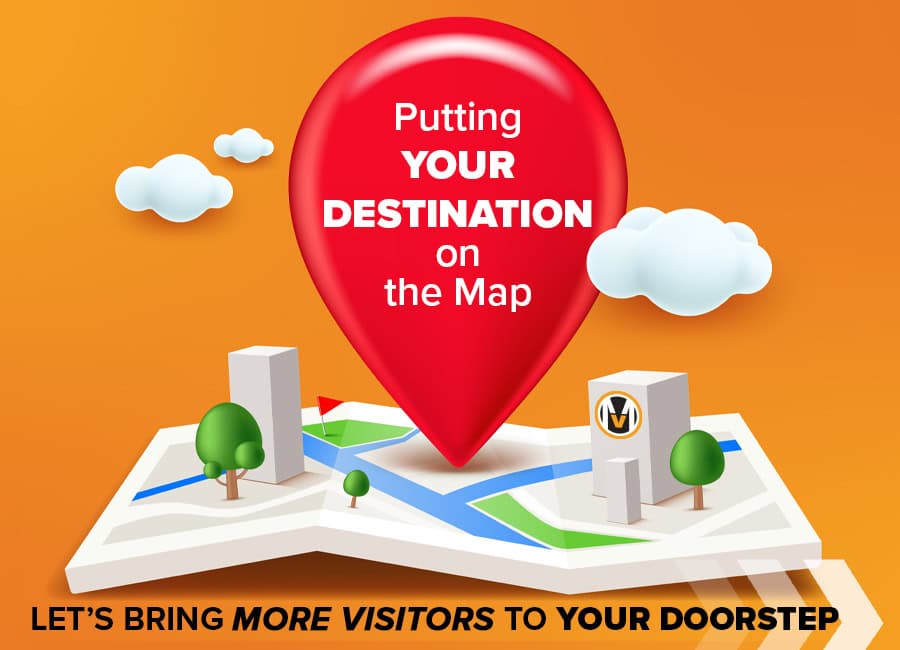Summer is right around the corner, and you know what that means – millions of visitors pouring into the Black Hills, ready to take in the best of our region’s lodging, dining, shopping, and entertainment. Is your hotel, restaurant, store, or attraction poised to attract the eyes of these vacationers, or are you destined to blend into the scenery? Follow the destination marketing tips below to increase foot traffic into your location this summer!
1. Highlight Your Unique Features
Whether you run a bed and breakfast with a haunting history, or a pizzeria known for wacky, delicious topping combinations, highlighting your unique features is crucial to attracting the right customers. Think about it – with tourists coming from all over the world, there will be many types of people looking for different types of experiences. By clearly defining what makes your business different from the others, you can better help guests choose options that best suit them and that will meet their expectations. Plus, people want experiences during their vacation that they can’t find at home, so showing how you are one-of-a-kind will be a huge advantage in the eye of a vacationer.
2. Identify Your Target Audience
After highlighting your unique features, think of what people are most likely to be interested in your offerings, and for what reason. Maybe your lively atmosphere tends to rope in a younger demographic, or the framed artwork on the walls attracts art aficionados. You’ll want to note each type of target audience for your business, and group them into categories that make sense. This information is invaluable in creating marketing campaigns that catch the attention of those that are most likely to become your customers.
3. Get Your Website Optimized for Searches
Put yourself in the shoes of someone on vacation (a marketer’s gotta dream, right?) – think of how many times you use your phone to search for “places to eat near me” or “best family attractions in (destination)” during your trip. If you’re like the average person on vacation, you probably perform that task dozens of times throughout your vacation, and you probably choose one of the first few options that appear.
If your website doesn’t appear in the first few entries for relevant searches, your potential customers may likely never know you exist. How do you reach those coveted positions? With a comprehensive search engine optimization (SEO) strategy that helps you shoot to the top of search results. If SEO isn’t a part of your digital marketing strategy, what are you waiting for?!
4. Video, Video, and More Video
The goal of destination marketing is to cause the viewer to envision themselves at your location, and there’s no better way to do that than with video. Investing in professional video is great for platforms like television, your website, and digital campaigns; however, short-term video that has a more natural feel is what’s getting brands noticed on social media. Ensuring you have some of both is vital for your overall marketing strategy.
5. Ramp Up Your Social Media Marketing
While people are on vacation, and not working, they have more time to scroll their social media feeds, giving you the perfect opportunity to catch their eyes with engaging content that compels them to visit your business. As noted above, video is huge for social media and should be a key component in your social media marketing strategy. Copy is also an important component to consider – on platforms like Instagram and TikTok, you’ll want to keep text as brief as possible, whereas you can go a little longer on Facebook. Overall, the key to a successful social media strategy is to put yourself in the minds of your target audience and post material that they will benefit from and care about.
6. Increase Your Budget
Make the most of your marketing dollars by allocating more during peak season than you do the rest of the year. This will allow you to better saturate the market when overall traffic in the region is at an all-time high, providing you with a better chance at brand awareness and converting customers. You don’t have to increase your overall yearly budget to do this; simply deduct budget from slower months and put them into the busier months.
7. Think Mobile
Lugging around a laptop is not how most people want to spend their vacation, that’s why it’s important to ensure that all your marketing efforts are optimized for the mobile experience. Can visitors to your website easily navigate pages on their phones, and are all images and text legible when viewing on the small screen? You may also want to target paid ads specifically to mobile devices so that you don’t waste your marketing budget including desktop viewers in your targeting.
Need help getting your business ready for the tourism season? The professionals at Midwest Marketing are here to help. Contact us today to get started!


